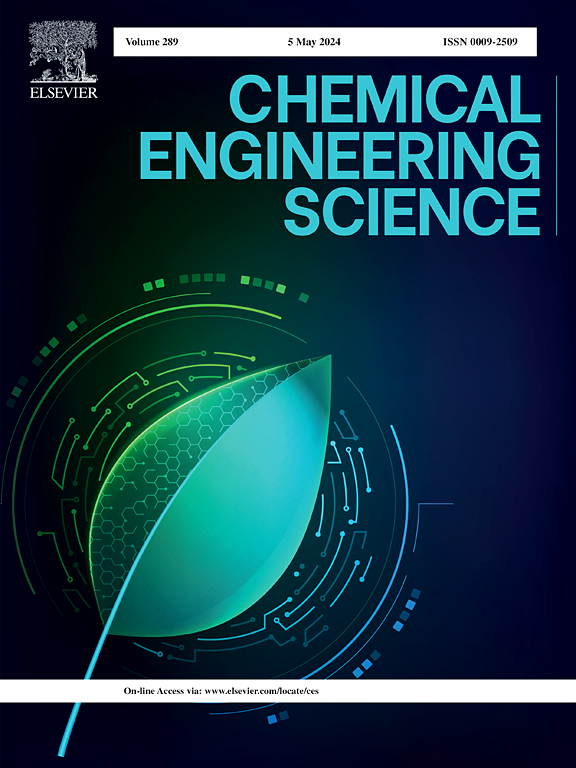Investigating the transformation relationships and key parameters influencing explosion characteristics
IF 4.3
2区 工程技术
Q2 ENGINEERING, CHEMICAL
引用次数: 0
Abstract
The auto-ignition delay times (IDT) and explosion limits (EL) are two important parameters describing the chemical reactivity of fuels, but their relationship has not been clearly revealed. The IDT and EL curves for a specific fuel only contain three parameters: residence (or ignition) time, pressure, and temperature, so their relationship can be revealed through these parameters. Specifically, the explosion limit curve can be obtained by collecting the intersection P-T state of the constant ignition time line with the ignition delay curves under different pressures on the IDT diagram—and vice versa. The ignition delay curves of H2, methane, ethane, and propane with flattened Z-shaped, approximate linear shape, ZTC (zero temperature coefficient), and NTC (negative temperature coefficient) responses are successfully converted to explosion limit curves with typical Z-shaped, approximate linear shape, ZTC, and NTC responses using this conversion method, respectively. Furthermore, as the equivalency ratio rises, the IDT and EL curves of H2 rotate counterclockwise around an anchor point, as the first and third explosion limits of H2-O2 are influenced by the concentration of O2 and H2, respectively. For the C3H8-O2 mixture, a higher equivalence ratio enhances fuel-involved reactions, resulting in a shift of the IDT and EL curves toward lower IDTs and lower pressure regimes. Moreover, the addition of N2 lowers fuel and O2 concentrations, reducing overall reactivity. The proposed transformation relationship between IDT and EL curves exhibits universality across fuels, enabling direct derivation of pressure–temperature EL data from IDT diagrams and vice versa.
研究了影响爆炸特性的转化关系和关键参数
自燃延迟时间(IDT)和爆炸极限(EL)是描述燃料化学反应性的两个重要参数,但它们之间的关系尚未得到明确的揭示。特定燃料的IDT和EL曲线只包含三个参数:停留(或点火)时间、压力和温度,因此它们之间的关系可以通过这些参数来揭示。具体来说,在IDT图上收集不同压力下恒定点火时间线的P-T状态与点火延迟曲线的交点即可得到爆炸极限曲线,反之亦然。将H2、甲烷、乙烷和丙烷的扁平z形、近似线性、零温度系数ZTC和负温度系数NTC响应曲线分别转化为典型z形、近似线性、ZTC和NTC响应的爆炸极限曲线。随着当量比的增大,H2的IDT和EL曲线围绕锚点逆时针旋转,这是由于H2-O2的第一和第三爆炸极限分别受到O2和H2浓度的影响。对于C3H8-O2混合物,较高的当量比增强了燃料相关反应,导致IDT和EL曲线向较低的IDT和较低的压力区移动。此外,氮气的加入降低了燃料和氧气浓度,降低了总体反应性。所提出的IDT和EL曲线之间的转换关系具有跨燃料的通用性,可以从IDT图直接推导压力-温度EL数据,反之亦然。
本文章由计算机程序翻译,如有差异,请以英文原文为准。
求助全文
约1分钟内获得全文
求助全文
来源期刊

Chemical Engineering Science
工程技术-工程:化工
CiteScore
7.50
自引率
8.50%
发文量
1025
审稿时长
50 days
期刊介绍:
Chemical engineering enables the transformation of natural resources and energy into useful products for society. It draws on and applies natural sciences, mathematics and economics, and has developed fundamental engineering science that underpins the discipline.
Chemical Engineering Science (CES) has been publishing papers on the fundamentals of chemical engineering since 1951. CES is the platform where the most significant advances in the discipline have ever since been published. Chemical Engineering Science has accompanied and sustained chemical engineering through its development into the vibrant and broad scientific discipline it is today.
 求助内容:
求助内容: 应助结果提醒方式:
应助结果提醒方式:


